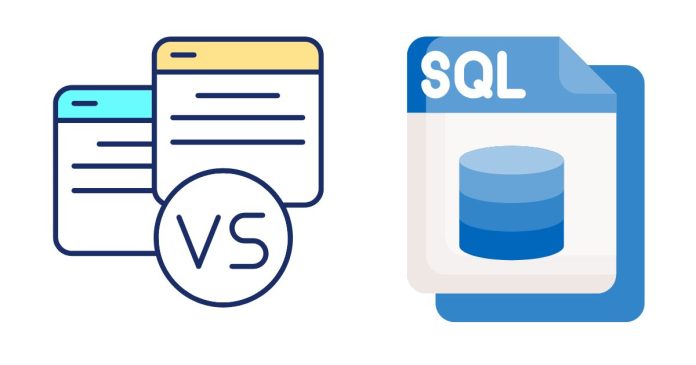In SQL, the concept of one-to-many relationships refers to how tables are related to each other based on data. This is an important concept in relational database design. Here’s a breakdown of one-to-many relationships and their comparison to other relationships:
One-to-Many Relationship
A one-to-many relationship occurs when one record in a table can be associated with multiple records in another table, but each record in the second table can only be associated with one record in the first table.
- Example:
- Customers and Orders.
- One customer can place many orders.
- Each order is placed by only one customer.
- Customers and Orders.
In this case:
- The Customers table has a primary key (e.g.,
customer_id). - The Orders table has a foreign key (
customer_id) that refers to thecustomer_idin the Customers table.
Visual Representation
| Customers Table | Orders Table | |
|---|---|---|
customer_id (PK) |
name |
order_id (PK) |
| 1 | Alice | 101 |
| 2 | Bob | 102 |
| 3 | Charlie | 103 |
| … | … | 104 |
- In this example:
- Alice (Customer 1) can have multiple orders (101, 104).
- Bob (Customer 2) has one order (102).
- Charlie (Customer 3) has one order (103).
Differences Between One-to-Many and Other Relationships
- One-to-Many vs One-to-One:
- In a one-to-one relationship, one record in a table is associated with exactly one record in another table.
- Example: A person and their passport. Each person has one passport, and each passport belongs to one person.
- In contrast, in a one-to-many relationship, one record in the first table is associated with multiple records in the second table.
Example of One-to-One:
- People and Passports.
- A person can have one passport, and each passport belongs to one person.
- Tables might look like:
people (person_id, name)passports (passport_id, person_id (FK))
- In a one-to-one relationship, one record in a table is associated with exactly one record in another table.
- One-to-Many vs Many-to-Many:
- In a many-to-many relationship, multiple records in one table can be associated with multiple records in another table. To implement this, you generally need a junction table (or associative table) to store the relationships.
- Example: A students and courses relationship. A student can enroll in many courses, and a course can have many students.
Example of Many-to-Many:
students (student_id, name)courses (course_id, course_name)- A junction table
student_courses (student_id (FK), course_id (FK))
Differences:
- In a one-to-many relationship, one entity (the “one” side) can have many associated entities (the “many” side).
- In a many-to-many relationship, both entities on either side can have multiple associations with each other.
- In a many-to-many relationship, multiple records in one table can be associated with multiple records in another table. To implement this, you generally need a junction table (or associative table) to store the relationships.
SQL Implementation Example for One-to-Many
1. Create the Tables
-- Customers Table (One side of the relationship)
CREATE TABLE Customers (
customer_id INT PRIMARY KEY,
name VARCHAR(100)
);
-- Orders Table (Many side of the relationship)
CREATE TABLE Orders (
order_id INT PRIMARY KEY,
customer_id INT,
order_date DATE,
FOREIGN KEY (customer_id) REFERENCES Customers(customer_id)
);
2. Insert Data
-- Insert Customers
INSERT INTO Customers (customer_id, name) VALUES (1, 'Alice');
INSERT INTO Customers (customer_id, name) VALUES (2, 'Bob');
INSERT INTO Customers (customer_id, name) VALUES (3, 'Charlie');
-- Insert Orders
INSERT INTO Orders (order_id, customer_id, order_date) VALUES (101, 1, '2025-01-01');
INSERT INTO Orders (order_id, customer_id, order_date) VALUES (102, 2, '2025-01-02');
INSERT INTO Orders (order_id, customer_id, order_date) VALUES (103, 3, '2025-01-03');
INSERT INTO Orders (order_id, customer_id, order_date) VALUES (104, 1, '2025-01-04');
3. Query the Data
To retrieve all orders for a customer (for example, Alice):
SELECT o.order_id, o.order_date, c.name
FROM Orders o
JOIN Customers c ON o.customer_id = c.customer_id
WHERE c.name = 'Alice';
This query will return:
| order_id | order_date | name |
|----------|-------------|-------|
| 101 | 2025-01-01 | Alice |
| 104 | 2025-01-04 | Alice |
Conclusion
- A one-to-many relationship is where one record in the first table is related to many records in the second table, but each record in the second table is related to only one record in the first table.
- This type of relationship is often implemented using foreign keys in SQL, and it’s common in cases like customers and orders, authors and books, etc.
- The main difference between one-to-many and other relationships (like one-to-one and many-to-many) lies in how many records can be associated across tables. In one-to-many, the “one” side is a single entity, and the “many” side can have multiple related entities.


